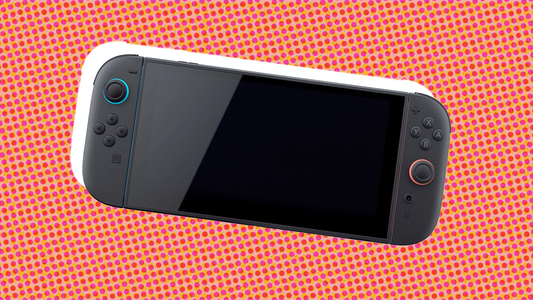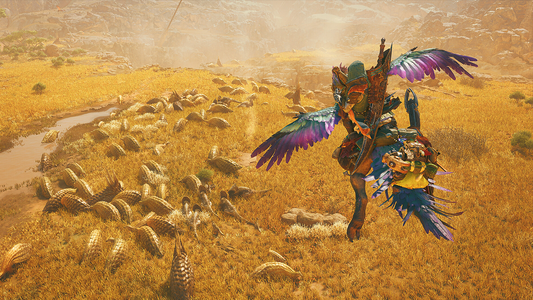
Are you developing a game and have recently thought of partnering with a publishing company? Or maybe you’re planning ahead, before starting to work on your first project?
In either case, you’ve come to the right place. This guide’s goal is to provide you with all the information required to present your game to a publisher — and do a great job of it!
Part I —The (In)famous Pitch Deck
Let’s start with the basics. The first steps between a game developer and a publisher usually involve a Game Pitch (also called a Pitch Deck) — a short presentation of the game’s features, its strongest selling points, and your vision of its development.
Building a solid pitch deck can be a challenge even for veteran developers. This is why, in the next few paragraphs, we’re going to share our best tips on the matter. Use these suggestions to create a great pitch deck of your own:
Step 1: Give Your Game A Proper Introduction
This is, perhaps, one of the most important parts: it sets the baseline of expectations for any additional information that comes after. A good introduction should cover these points:
Elevator pitch — To start off strong, try to combine all of the game’s coolest parts in one short, but sweet sentence. Maybe, your game is “Enter The Gungeon meets farming”, or “Doom as a rhythm game”. Whatever it is, make it fun and appealing! This gives an immediate understanding of what kind of product a publisher is dealing with, and whether it suits their lineup.
Key information about the game and its features — Everyone needs to be on the same page, knowing exactly what the game is about.
Project’s most important features and innovations — Which features make your game stand out? Which features are you the most excited about? If you can, showcase these features in your pitch with pictures or video!
Remember: there’s no second chance to make a first impression — so make sure that your intro perfectly encapsulates everything that’s unique and exciting about the game!
Avoid using “big words” with little to no details, i.e.: “Holistic gameplay experience”, “Unique, immersive, & fully explorable” etc. Be specific — and explain how exactly you are going to achieve what you’re talking about.
Step 2: Add Some General Information
Now that the basics are out of the way, it’s time to delve a bit deeper into what your project will be about. Your pitch deck should include a few slides that give the publisher a general idea of the game, its scope, and its unique features.
We’ll explore some of these further down the guide but, for now, here’s a list of vital data you need to add to your pitch. As they are the most important information about your game, every pitch deck should include:
Game’s Title
Genre
Core List Of Features
Visual Style
Required Budget (if applicable)
Team Info
Step 3: Showcasing Your Game
During the pitch you will have to, in one way or another, show the publisher your game. Of course, there’s a lot of intricacies involved with that — with most of them depending on how much of the game you can actually show.
With that being said, let’s get through the key ideas in how to best showcase your game:
Start with your strongest point — Begin by showing something that will grip the audience. There’s something that makes your game shine, even in its unfinished state: its visual style, a gameplay feature, or even the narrative component — whatever it is, show it first!
Best Practices — Of course, the best way to show off your project would be letting the publishers play the currently available version of the game — with a list of available features and development time spent as a cherry on top. And if you don’t think the game’s ready to be played yet — just record a gameplay session at home!
Fake it till you make it — As mentioned in the previous point, having a prototype is key. And if you don’t have one available — why not try to make one? Even a “proof of concept” video, showcasing the creator’s intent, will help everyone understand your idea better.
Visualize your gameplay, if possible — Enhancing your gameplay feature explanations with visual aid will help others understand what your game is all about — and what exactly makes it fun to play.
Give others a feel for the game’s final visual style. — Whether through concept art, in-game models or any other assets, it’s really important to relay your plans for the game’s final look.
Step 4: Introducing Your Team

Games are often seen as a sterile product of modern technology, born from a void that most consumers have no clues about. But, as a developer, you know too well that’s not the case.
There’s a lot of work behind even the smallest of games.Now that you’ve shown your title, it’s time to introduce the people who’ll help bring it to life!
Present the team in its entirety — and if you’re thinking about bringing more people on board would help, don’t forget to mention it in the pitch!
Showcase the team’s merits… — Whether you’re a lifelong fan of the genre, or an experienced developer full of insights and ideas — show the publisher all the reasons why you are the perfect team for this particular game!
…And their technical capabilities — Games nowadays are getting more and more technically complex, so outlining your team’s technical skills is just as important!
Step 5: Crunching The Numbers

As publishers will likely take an active role in the development of your game, they’ll need to know more about its current state and the resources you’ll need to complete the project.
Providing an estimate of the game’s budget and development time will greatly help both parties understand the situation. Not only that, the effort of researching the necessary info goes a long way towards showing your dedication to the project.
This information needs to be present in your document:



































